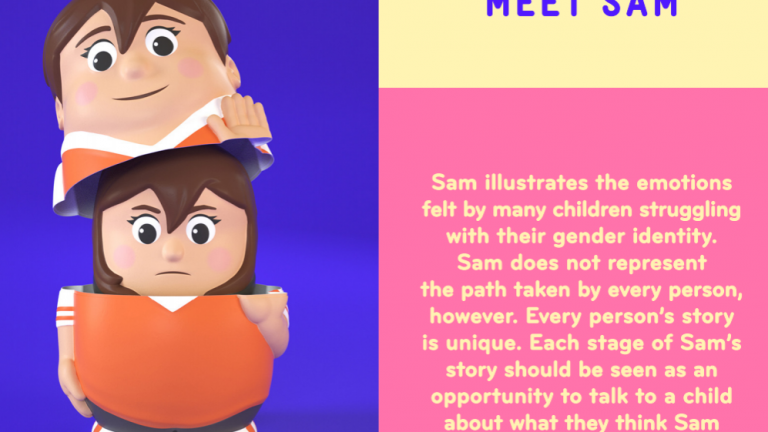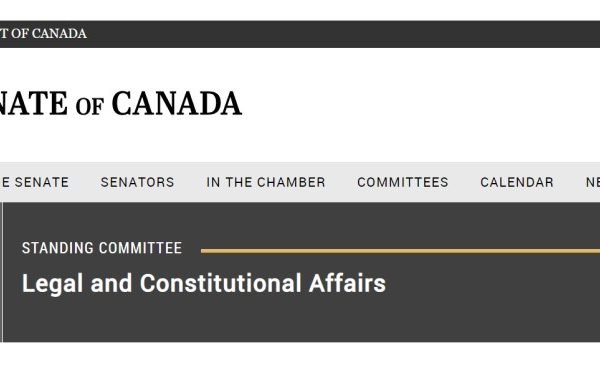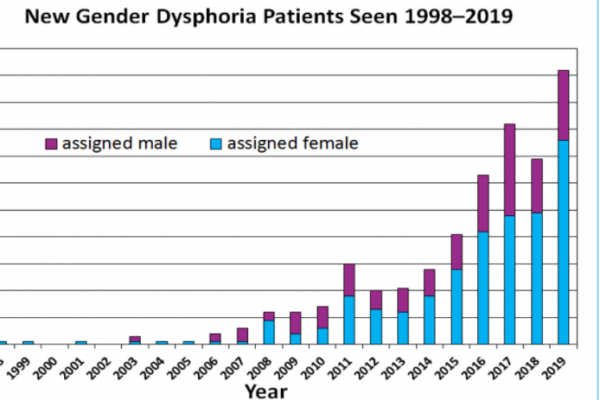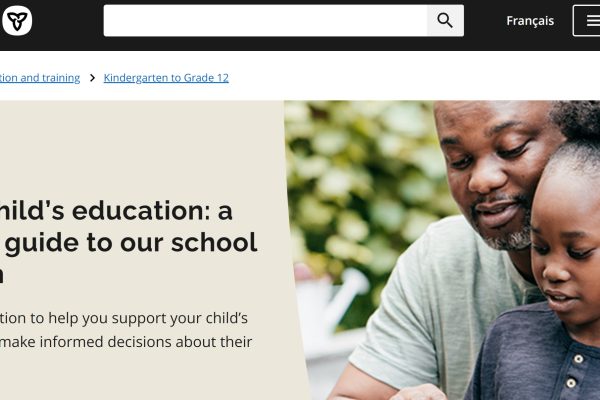The British Department for Education has established new guidance for the instruction of gender and biological sex. The clear and direct guidance is found in the “Ensure Content Is Appropriate” section of the Relationships, Sex and Health Curriculum, but parents will be able to use this directive to hold educators to account wherever the topic of gender is being raised.
We are aware that topics involving gender and biological sex can be complex and sensitive matters to navigate. You should not reinforce harmful stereotypes, for instance by suggesting that children might be a different gender based on their personality and interests or the clothes they prefer to wear. Resources used in teaching about this topic must always be age-appropriate and evidence based. Materials which suggest that non-conformity to gender stereotypes should be seen as synonymous with having a different gender identity should not be used and you should not work with external agencies or organisations that produce such material. While teachers should not suggest to a child that their non-compliance with gender stereotypes means that either their personality or their body is wrong and in need of changing, teachers should always seek to treat individual students with sympathy and support.
You should work together with parents on any decisions regarding your school’s treatment of their child, in line with the school’s safeguarding policy and the statutory guidance on working together to safeguard children.
British Department for Education www.gov.uk
This directive effectively prevents schools from teaching children to understand themselves through the model of “gender identity” because it is not evidence-based and it can only be explained to children with the use of gender stereotypes.
Comparing the You Inside Project against these requirements
In this post, we compare one acclaimed Canadian resource – the You Inside Project – against the new British guidelines to illustrate how gender ideology has permeated the resources that are being developed for Canadian schools.
The You Inside project, a project from Gender Creative Kids Canada, has the mission to educate people around the world about gender identity issues. Sam is an essential tool designed to help children understand what it means to grow up as a transgender child.
Gender Creative Kids Canada
The You Inside Project was produced by Gender Creative Kids who consider themselves “a parent action group based in Montreal”. The project was developed in partnership with Canada’s National Film Board, among several other respected organizations. It won a medal at the Cannes Film Festival in 2019.
The You Inside Project includes a beautifully animated and emotionally heart-wrenching film about “Sam” who experiences bullying and teasing because she doesn’t conform to traditional gender stereotypes. The project also includes a toy modelled as a Russian nesting doll, to show “the emotions felt by many children struggling with their gender identity”.
What’s the teaching objective?
The You Inside project claims that the goal of their initiative is “Stopping transphobia before it starts by teaching children about gender identity.”
At a cursory glance, the film and doll seem to innocently tackle this topic. The teaching resources, however, encourage educators to conflate sex and gender and promote the idea that gender identity is innate while biological sex is “assigned at birth”. The ideological bias is extraordinary.
Rather than deconstruct and challenge the stereotypes that were illustrated in the film, the teaching resources are intended to teach children about gender identity. There is no content in the teaching resources that address the harmful use of gender stereotypes. Instead, children are asked to consider “what is Sam feeling?”.
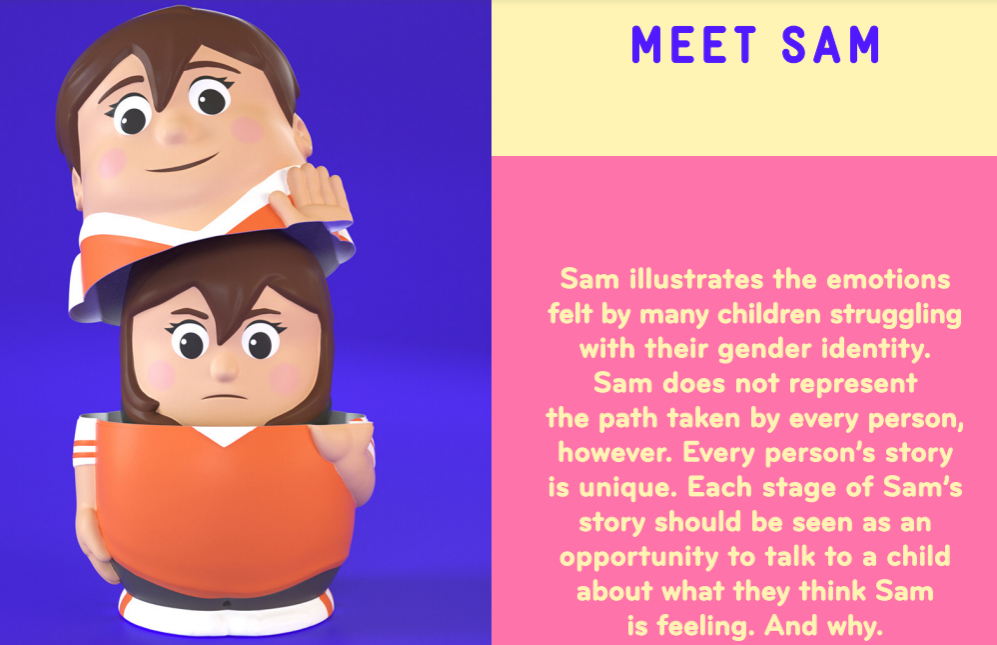
Link to You Inside Project Teaching Resources
Usage of gender stereotypes
“You should not reinforce harmful stereotypes, for instance by suggesting that children might be a different gender based on their personality and interests or the clothes they prefer to wear.”
British Department for Education
The only way to explain gender identity to children is by using gender stereotypes. The film “You Inside” uses gender-stereotyped toys, clothing and hairstyles to convey a message that what you “feel inside” may not be aligned with the gender you were “assigned at birth”.
The main character, Sam, is introduced as a stereotyped girl with long hair who is encouraged to wear pink, frilly dresses and rejects these. Sam wants to play with trucks instead. As Sam grows older, she becomes conflicted and isolated because of her gender non-conforming preferences. At the end of the film, Sam “becomes” (she merges with) the stereotyped boy depicted as her twin in the film.
The use of the song “Listen to your heart” and the emotional pull of the message is a very effective tool that hides the fact that the entire story is based on gender stereotypes and there is no guidance in the teaching resources to challenge these.
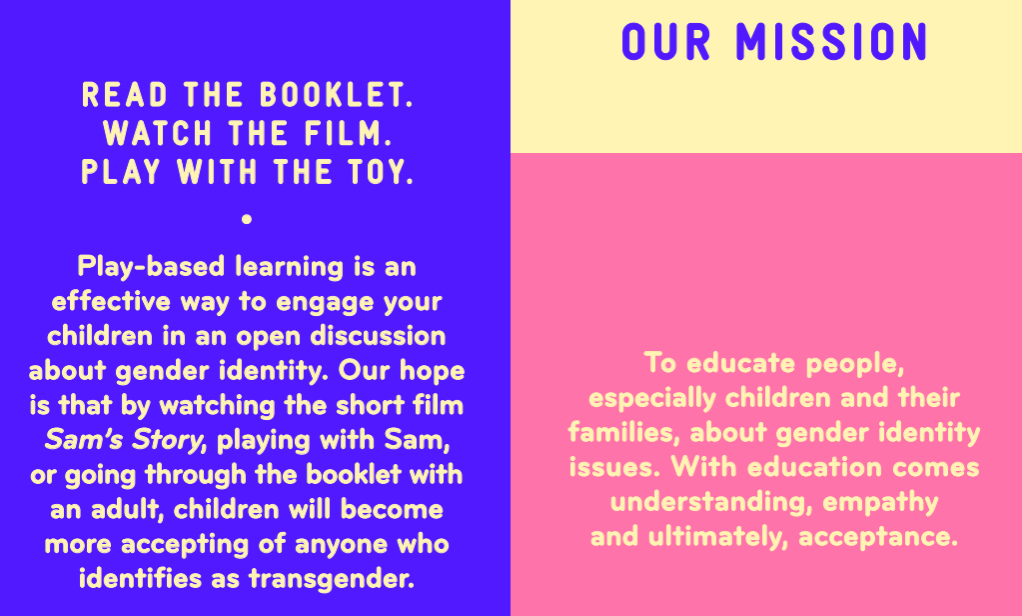
Identity indoctrination vs evidence-based education
Resources used in teaching about this topic must always be age-appropriate and evidence based. Materials which suggest that non-conformity to gender stereotypes should be seen as synonymous with having a different gender identity should not be used and you should not work with external agencies or organisations that produce such material.
British Department for Education
The teaching resources that accompany the film are completely devoid of any factual and evidence-based concepts such as biology, male, female, birth sex or sex. Instead, the teaching resources that accompany the film encourage children to conclude that Sam’s feelings are caused because her “true self” does not match her “gender assigned at birth”. This is not a film and toy that teaches children to be kind and accepting of others; these are resources intended to teach each child that how they “feel inside” is called their gender identity and that it may not be the same as their “gender assigned at birth”.
The statement that children may “question why their gender assigned at birth differs from the gender identity they feel” illustrates the underlying belief from the producers of this material that non-conformity to gender stereotypes is synonymous with having a different gender identity.
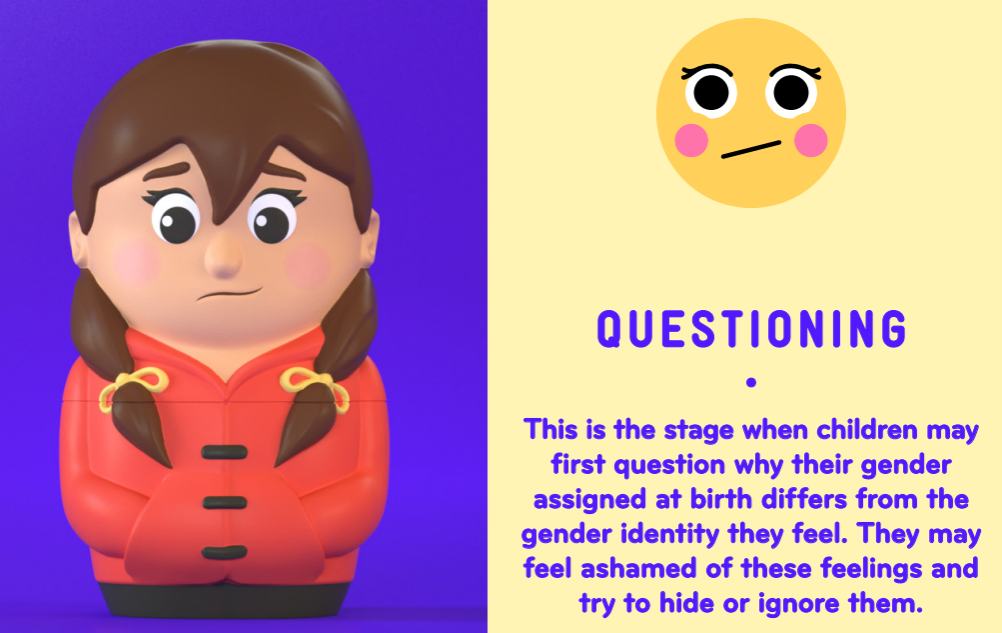
Casual promotion of identity or medical transition
While teachers should not suggest to a child that their non-compliance with gender stereotypes means that either their personality or their body is wrong and in need of changing, teachers should always seek to treat individual students with sympathy and support.
British Department for Education
The teaching resources included with You Inside include information about how to transition from “one gender to another” including puberty blockers; as if changing one’s body to match how a child “feels inside” should be a casual classroom topic. The teaching resources introduce the idea of needing an operation to change one’s body by saying that it’s not always necessary. Nevertheless, the topic is introduced. Changing one’s name and pronouns is introduced casually as well, as if this aspect of changing one’s personal identity can be done with the same level of reflection as choosing an outfit to wear each morning.
Changing “from one gender to another” using puberty blockers or an operation is suggesting that one’s body is wrong and that human biology is irrelevant in determining one’s gender. Educators are being encouraged to introduce the topic of medical transition for children without any consideration of the experimental nature of these treatments or the increasing numbers of young people expressing regret and detransitioning.
The materials offer no discussion points to help students be supportive of Sam as a gender non-conforming girl. The only conclusion the teaching resources draw is that Sam really “is” a different gender because her “true self” is not a stereotypical girl.
The Need for Policy Reform
We hope that teachers would use their own professional judgement to deliver the You Inside Project materials to convey a message of sympathy and support for children who are gender non-conforming. Unfortunately, the teaching resources don’t provide educators with any appropriate guidance to achieve this goal (based on the British government statement).
Educational materials and resources often purport to address the topic of transphobia but instead, they may be designed to deliver a message that makes children believe that their personalities are wrong for their sex and their bodies are wrong for their gender identity. This is a “bait and switch” technique to seek alignment on a common goal – inclusivity and anti-bullying – when in fact, the instruction pushes a completely different agenda. Gender identity activists have no interest in challenging gender stereotypes or helping children to be supportive of each other while respecting biological reality.
School boards in Canada have come up with their own policies on “Gender Identity and Gender Expression” because this nebulous term is a protected characteristic in our provincial and federal human rights codes. The policies are typically positioned with a well-intentioned desire to be inclusive and even to create a safe environment for learning. But there are no policy directives that limit teachers who believe that children really “are” a different gender and feel that it is their duty to help them transition if they don’t conform to gender stereotypes or don’t “feel” like a typical girl or boy.
“Gender identity and gender expression” policies in the Canadian education system have the effect of promoting a new ideology of gender that can be imposed on all children as a replacement for biological reality.
The guidance from the British Department for Education is an important clarification of the role of the education system in that country. Clearly, the British government has decided that the education system should not lead children to believe that they are a gender that is different from their biological sex.
Canada and other western countries need to take similar action.
If you are Canadian and concerned about this topic, please send our letter to your provincial Minister of Education and your local school board.
